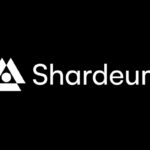Key Takeaways
- A monolithic Blockchain is a system that carries out all 3 core functions (consensus, data availability, and execution) of the blockchain all within a block.
- Modular Blockchain is a system where tasks are shared across different layers. These layers work independently of each other.
- The primary functions of any blockchain network are Consensus, execution, Data Availability, and Settlement.
- Scalability is one of the setbacks of monolithic blockchain, in a bid to improve scalability, the modular blockchain design was proposed.
Modular blockchain is fast gaining popularity in the blockchain and scalability community. This blockchain design is set to change the narratives of the core components of layer 1 blockchain, and it is more likely to make up for landslide improvements in scalability, efficiency, and interoperability. In this article we will examine the traditional blockchain ( monolithic blockchain) architecture and the limitations of this existing architecture.
- Key Takeaways
- What is Blockchain
- Monolithic Blockchain
- Monolithic Blockchain Architecture
- How Does a Monolithic Blockchain Work
- Benefits of Monolithic Design:
- Drawbacks of Monolithic design
- Modular Blockchain
- The Modular Blockchain architecture
- Benefits of Modular Blockchain
- Drawbacks of Modular Blockchain
- Conclusion
Modular Blockchain leverages the principle of modularity (a division of systems into components that work together to achieve a common goal). Hence, they can be defined as a blockchain in which tasks or functions are shared across different layers or components that work independently of each other.
Examples: Cosmos, Celestia, Arbitrum, zkSync, and Optimism.

What is Blockchain
A blockchain is a decentralized and public ledger that keeps a record of blockchain transactions across numerous computers. In simple terms, a blockchain is a network of computers or nodes that share the same transactional history. The core functions of any blockchain network are Consensus, execution, Data Availability, and Settlement.
- Consensus: This is what defines the state of the blockchain. It ensures that all validating nodes on a blockchain have the same state.
- Execution: One of the functions of a blockchain network is to execute the pending transactions in the network.
- Data Availability: This is the amount of data stored in each block of the blockchain.
- Settlement: One of the functions of a blockchain network is to finalize transactions, validate proofs and settle disputes.
A monolithic blockchain executes all 4 of these functionalities at its base layer, while a modular blockchain only handles a few of the 4 functionalities while outsourcing the rest functionalities to other layers.
You can check in this article to see how blockchain technology is bringing prosperity to developing how they work
In the rest of this article, we will dive into the monolithic blockchain architecture, its benefits, and drawbacks, and make a comparison with modular blockchain.
Monolithic Blockchain
The word monolithic is coined from 2 phrases: “ mono” and “ lithic”, which means formed from a single source place.
In simple terms, a monolithic blockchain carries out all 3 core functions (consensus, data availability, and execution) of the blockchain all within a block. This design is the design of the vast majority of blockchains (Bitcoin, Ethereum, Solana, etc)
Monolithic Blockchain Architecture
The blockchain architecture outlines the activities that nodes on a monolithic chain do for every transaction. Below are activities across the Consensus, Data Availability, and Execution nodes
- Consensus : Consensus nodes in monolithic chains agree on what transactions can be processed and what data can be verified as accurate
- Data Availability: This node plays a crucial role in the validation and distribution of new blocks across the network. It particularly ensures that nodes in a blockchain network have access to the same set of data.
- Execution : The function of this node is to execute and validate transactions based on rules and logic in smart contracts.
How Does a Monolithic Blockchain Work
All tasks in this chain are handled on a single layer because the entire network operates as a single unit. The execution, data availability, and consensus nodes all work together to process transactions and keep the blockchain safe. These nodes agree and validate every transaction and block based on the rules and logic registered in the smart contract.
Let’s examine some of the benefits of this blockchain design.
Benefits of Monolithic Design:
Some of the benefits of monolithic blockchain design are security, utility, ease of development, and maintenance.
- Security: All components of the blockchain are designed in a way that they work together ( from consensus to execution) and this reduces the risk of security vulnerabilities associated with blockchain data saved in many nodes
- Easier Development and Maintenance: Because all nodes are managed in a unified system it is easier to implement changes and updates to the blockchain
- High Performance : Monolithic blockchain design produces high output and this is achieved as a result of simplified architecture, hence it’s easier to process information across different nodes of the blockchain, leading to a faster processing time
Drawbacks of Monolithic design
To have a better understanding of the drawbacks associated with monolithic design, let’s consider a scenario of a car manufacturer. Let’s consider a popular car manufacturing company like Ford, which does not produce every part of the vehicle in 1 facility.
Instead, different parts of the vehicle from the engine, tires, glass, etc are manufactured at separate locations where a group of experts design them and then ship these parts to a central facility where they are assembled to form a complete car.
In a situation where all these parts are manufactured in a single facility, it could incur significant costs to build a company workshop where a larger team can work. In situations where there are massive car orders, the facility won’t be able to meet demands. This scenario clearly explains the drawback associated with a monolithic blockchain (a chain where all activities are performed in a single place)
Below are some of the drawbacks of monolithic blockchain design
- High chances of failure
Since all nodes are integrated, a failure in the area of the system can affect the entire chain. This makes the chain susceptible to failure and security breaches.
- Flexibility
Monolithic blockchains are inflexible and this is because all nodes are closely integrated, hence when you make changes to a part of the blockchain it most likely impacts other nodes/ areas of the chain.
- Reduced blockchain efficiency: Reduction in efficiency is associated with the limitation of node resources( bandwidth, storage, and node source limits)
- Scalability: Scalability is the ability of a system to accommodate growth and increasing amount of work smoothly and effectively, without compromising efficiency and output.
Scalability is a major drawback for monolithic blockchains as it’s almost impossible to optimize all 3 core properties on a single-layer monolithic blockchain.
To improve scalability, the modular blockchain system was proposed, this system optimizes 1 or 2 properties on a single layer and shares other properties to another layer. The introduction of modular blockchain is set to increase the transaction processing capacity of the blockchain while maintaining security and decentralization.
Modular Blockchain
Modular blockchains thrive on the concept of modularity- The division of systems into components that work to achieve a specific goal or objection.
As previously established, it’s almost impossible to run all 4 functionalities (consensus, data availability, settlement, and execution) on a base layer, as this could hinder the system’s efficiency and capacity. Hence, a modular chain separates the system into several layers that operate independently.
🧱 Modularity is the winning approach 🏆
Connext is pioneering Modular Interoperability, a design that enables the highest security possible across any crosschain path while maintaining speed and cost effective execution. pic.twitter.com/Y3GaTLXnMS
— Connext (@ConnextNetwork) April 3, 2023The Modular Blockchain architecture
The blockchain architecture outlines the activities that nodes on a modular blockchain do for every transaction.
- Execution Layer:Transaction and state changes are processed in this layer. Users interact with the blockchain via this layer. Activities in this layer include the deployment of smart contracts and signing of transactions.
- Consensus Layer : This layer agrees on the conditions for verifying and validating transactions.
- Data Availability : This layer makes sure that records are available to the public. The data required to verify the state of a transaction are published and stored on this layer.
Benefits of Modular Blockchain
Below are some benefits of modular blockchain: Scalability, flexibility, interoperability.
- Scalability: It’s impossible to optimize all three core properties at once on a single layer. Modular Blockchain optimizes one or two properties on a single layer and shares other properties to another layer.This way, the blockchain doesn’t have to handle all properties itself but only handles some and shares the rest with other layers.
- Flexibility: One of the benefits of modular blockchain architecture is the flexibility to make changes or upgrades to a specific layer without affecting the entire chain and this is because the nodes work independently unlike monolithic chains where all nodes work together.
- Interoperability : Interoperability is the ability of different technologies to interact and communicate with each other seamlessly. Modular blockchain architecture allows different layers to communicate and interact with each other seamlessly.
All this abundance provided by modular blockchains ultimately enables:
☑️ More capacity for applications as the ecosystem grows
☑️ More options for developers to build their applications.
— Celestia (@CelestiaOrg) April 13, 2023Drawbacks of Modular Blockchain
- Complex Development and Maintenance Process: Modular blockchain architecture is more complicated than monolithic blockchain. Hence it requires a lot of expertise and development efforts.
- Governance Challenges: Modular blockchains have different components and these components may have different stakeholders and unique decision-making processes. This can lead to disparity over the direction of the blockchain and how each module should be developed.
Conclusion
Modular and Monolithic are 2 different blockchain designs.
A monolithic Blockchain is a unified system where all components work together and are closely integrated to accomplish a common goal.
Modular Blockchain is a system where tasks are shared across different layers. These layers work independently of each other, Each of these blockchains has its setbacks and benefits. However choosing which to use requires an understanding of your project goals, consideration of size, complexity of the network, scalability, and interoperability requirements.
A blockchain network with limited functions or transactions is more likely to benefit from monolithic architecture, while a blockchain network with complex transactions benefits from modular architecture.
̶m̶o̶n̶o̶l̶i̶t̶h̶i̶c̶ ̶b̶l̶o̶c̶k̶c̶h̶a̶i̶n̶s̶
modular blockchains 🧱 pic.twitter.com/q3wFW2BrXt
— Eclipse (@EclipseFND) April 20, 2023



















